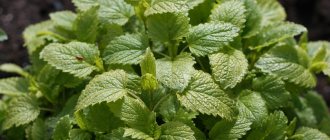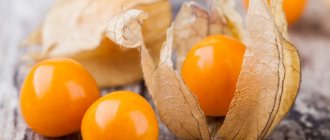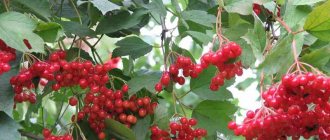Peanuts are a familiar product that not only has excellent taste, but also a lot of useful properties. Thanks to its unique properties, the plant has become a popular product in many countries. The culture comes from South America and was known to the ancient Indians. Even before the advent of Columbus, they knew what peanuts were and used this knowledge.
The Indians called it “ankhuk”, used it for food, and prepared medicinal potions from it. The one who had peanuts was a real rich man, he could use it instead of money. What are peanuts today - a favorite delicacy of many people, an amazing nut that grows underground.
How and where does it grow?
Not everyone knows how peanuts grow. Visually, it is a small bush with a branched stem, reaching a height of 70 cm. It can grow both upward and spread along the ground. The leaves are oval, planted alternately, and grow on long petioles. A flower grows on its thin stem, which gradually bends towards the ground and buries itself in it, where the peanuts grow.
It is inside the flower that pollination occurs, and the nuts grow in the ground. The reason is the climate of the places where peanuts grow, and how high temperatures have a detrimental effect on them. Due to the heat, the flowers die, which means their fruits do not develop. With this extraordinary method, the plant protects the fruits from drought. Having penetrated the soil, the ovary begins to grow rapidly at a depth of 5-10 cm, forming a cocoon-shaped bean with seeds. Several “nuts” develop in one pod.
peanut field
Suitable conditions for growing peanuts
For successful cultivation it is necessary to create suitable conditions for it. Observe crop rotation, choose suitable soil and location, monitor light, humidity and air temperature.
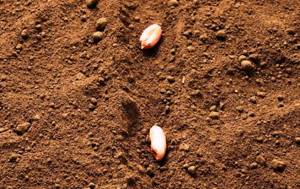
Temperature, humidity and light
Germination of peanut seed material begins at a temperature of 14-16 ° C; the plant will not survive frosts and a sharp drop in temperature. Therefore, before planting, you need to make sure that the night frosts have subsided.
Peanuts require high soil moisture. To do this, follow the watering rules, sprinkling and spraying the seedlings. With insufficient moisture, the bushes begin to die, the leaves dry out and fall off.
Excessive watering of peanuts leads to the development of root rot.
Lighting at the seat must be at least 8 hours a day. Shading or partial shade has a detrimental effect on the development of the plant. He will not have enough strength to form an ovary.
Required soil composition
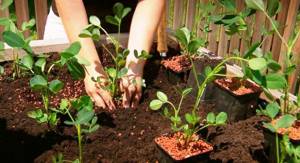
Peanuts are unpretentious in choosing soil composition. It grows well in sandy soil and black soil. But it requires certain conditions to be met:
- neutral earth environment;
- enrichment with magnesium, potassium, manganese, nitrogen, calcium;
- good breathability and drainage of excess water;
- sufficient soil moisture.
Favorable and Undesirable Neighbors
When planting, the crop requires crop rotation. Peanuts should not be planted on the site after cultivation and next to the following plants:
- beans;
- peas;
- beans;
- lentils.
These crops are close relatives of the nut, and therefore have common diseases and pests. The risk of developing root rot increases.
Favorable neighbors and predecessors for peanuts are:
- potato;
- cabbage;
- cucumber;
- tomato.
Which family: nuts or legumes?
To understand whether it is a nut or not, it is important to know which family the plant belongs to. It also has other names: Chinese nut, underground peanut. Surprisingly, the plant belongs to the legume family, and the fruit is a “groundnut” or “cultivated peanut.”
It is incorrect to call peanuts both a nut and a bean. The correct definition is leguminous grass.
The product is rich in protein, and unlike walnuts, it does not contain much fat, so it is a dietary product.
Benefit
Peanuts are rich in vitamins and microelements and have various beneficial properties for the body:
- Affects blood clotting.
- Helps improve memory and attention, reduces fatigue.
- It is a good antidepressant.
- Good for immunity.
- Reduces the risk of cancer.
- Prevention of diseases of the cardiovascular system.
- Regulates blood sugar levels.
- Supports blood pressure and metabolism.
- Removes toxins from the body.
- Increases hemoglobin.
- Prevention of gallstone disease.
- Normalizes the balance of hormones in the body.
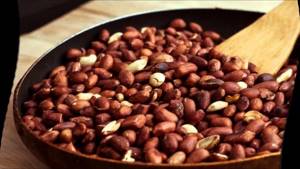
Peanuts are good for the female body. Affects health and appearance.
- Groundnuts strengthen hair follicles and promote hair growth. They become thicker and less brittle. Also improves skin condition.
- Peanuts support hormone balance. It is useful to include in the diet of girls during puberty and women during menopause.
- Peanuts are good at cleansing the digestive system of toxins and speeding up metabolism.
- Peanuts are also beneficial for men.
- To strengthen hair follicles. This prevents early baldness.
- Peanuts normalize genitourinary activity. It is useful to use to improve potency, prevent prostatitis and to prevent infertility.
- Peanuts have a beneficial effect on the muscular system and restore strength.
How to grow in the country, in the garden?
The plant is unpretentious, so both experienced and novice summer residents can grow peanuts at home in the garden. With proper care, this process is not particularly difficult.
You can use two planting methods: seeds or seedlings. The choice will largely depend on the climate. In warm areas, you can safely plant peanut seeds in the garden as soon as the temperature reaches 15 degrees and there are no night frosts. Planting seedlings increases productivity.
Here are the basic steps on how to plant and grow peanuts at home in the garden:
- Loosen the soil and prepare the holes.
- Place the seeds 10 cm deep or transfer the seedlings along with a lump of soil.
- Provide proper care.
To grow peanuts in a summer cottage or in a garden, you need to select a lighted area away from the trees. Uniform shoots will appear in 2 – 3 weeks.
To grow strong peanut bushes, you can apply mineral fertilizers several times a season. This is done infrequently and in small quantities. On the site you will also find information on how you can grow your own avocado, sage, banana, mango and ginger.
Watering is an important factor in order to successfully grow peanuts in the country: as soon as the soil dries out, it needs to be moistened.
During dry periods, you need to water once a week, during rainy periods - as needed. After each watering, you need to loosen the soil to saturate it with oxygen. In June, the peanuts will bloom with orange flowers that will reach towards the sun. Flowering will last 14 days, after which they will begin to burrow into the ground. Stronger bushes can be hilled like potatoes.
At this stage, you only need to water the bushes during prolonged droughts. The peculiarity of peanuts is that their fruits develop slowly underground, so prolonged warmth is very important for them. In cool weather it is better to cover it with film. Knowing how to plant and grow peanuts, you can reap a decent harvest. At the beginning of autumn, you can dig up a test bush and check the degree of ripening of the nuts. The dug up bushes need to be dried for several days, then separated from the roots. If storage is intended, it is better to leave the seeds in the pods.
You need to understand the peculiarities of growing crops in the northern regions. It is important to prepare the ground for a warm bed in the fall by burying plant waste at a shallow depth, which will rot over the winter and begin to release heat. It is also important to provide warmth to the seedlings and before growing peanuts, build a greenhouse or simply cover the bed with film. Peanuts planted in greenhouses between tomatoes or other tall vegetables show good results.
When growing peanuts in the garden, do not delay harvesting. If frost catches the fruits in the ground, the taste of the product will be spoiled - it will become bitter.
What varieties of peanuts are there?
Few people know how groundnuts grow. The success of growing a crop depends on the selected variety, as well as weather conditions. Therefore, before planting, it is very important to choose the right nuts that are suitable for the local climate. The quality of the fruit and the quantity of the harvest will directly depend on this.

Each variety of peanut has its own strengths and weaknesses, which should be studied before planting the seed. There are 4 main types in total. Among them:
- Virginia. Selected variety with the brightest taste. It grows no more than 55 cm. It is best to eat roasted nuts;
- Valencia or Redskin. Their shoots have a reddish tint. They rise up to 1 meter. Ripe pods contain 3 nuts, which are covered with red skin;
- Spanish. Nuts, compared to other varieties, contain a high percentage of oil. The fruits are of average size and yield. Spanish is often found in modern stores as a fried, salty snack;
- Runner. The variety is distinguished by large-sized fruits. If you follow all the rules of care, the peanut bush has a high yield. The nuts have a rich taste. This quality allows them to be used for the production of oil or simply consumed in salted form.
The Otradokuban variety is best suited for growing peanuts in Russia. It was released in 2005.
This is interesting!
Each variety of peanut has its own advantages and disadvantages. To grow a plant yourself and get a good result from the bush, you need to know how to grow it correctly, as well as follow certain rules for caring for it.
How to germinate for planting?
How to germinate peanuts for planting yourself to get a good harvest is a question that worries many. First of all, you need to buy unpeeled pods in the fall, in which the seeds are preserved. The ripening period for groundnuts is 130–150 days, so you need to focus on the climate of your region when planting seedlings.
To grow peanuts in the southern regions, planting begins in early March. Not everyone knows how to germinate peanuts at home so that the seeds do not rot.
The method of soaking in water is not always effective; it requires constant monitoring of the condition of the nuts. If air bubbles begin to rise to the surface of the water, it means the planting material is hopelessly damaged.
A more gentle method for germinating peanuts: put a few nuts in a damp cotton pad, and then wrap all the discs in a bag. After 3-5 days, the seeds will sprout and you can plant them in a box with soil. You can try not soaking the nuts at all, but planting them directly in the soil.
Before planting peanuts to grow seedlings, you need to prepare pots of sufficient size. It is better to place the containers on a warm windowsill so that the soil warms up. After three weeks, the seedlings will grow to 10-12 cm and can be planted on the site.
General information about groundnuts
The groundnut grows, forming a branched stem. It is worth noting that peanut flowers only last one day. Sometimes they die off even unpollinated. When flowering, it is very important that after the flower is pollinated, it gets into the ground, since without this the formation of the nut will not begin. If the inflorescences do not fall into the soil for some reason, then over time they die.
Peanuts can be eaten both raw and processed. In the second case, it is used as an additive to various dishes. The nutritional and beneficial properties of peanuts make it a very valuable crop. People who monitor their figure should first of all pay attention to this product, since when it is eaten, a feeling of fullness quickly comes.
The largest groundnut plantations are located in tropical countries. Despite this, it is possible to obtain a groundnut harvest even in our climate. Despite the fact that many of us have heard about this legume and even tasted the nut, not everyone decides to grow it in their summer cottage.
How to plant correctly in open ground?
Before planting peanuts, you need to pay attention to the planting material. You need to select intact, large seeds and clean them.
When choosing the most suitable area for planting peanuts in the garden, it is better to focus on the one where the vegetable crops grew. If you plant peanuts after legumes have been harvested from the area, there is a risk of getting a small harvest. The place should be illuminated, ventilated, without shadow. It is necessary to clean it of fertilizer residues.
Before planting peanuts in open ground, you need to make sure that the soil is warm enough. It is necessary to moisten the soil, thoroughly loosen it and make shallow holes. To plant peanuts correctly, it is important to maintain a sufficient distance between plants: 50 cm between holes. 3–5 seeds are placed in each hole, since weak seedlings may not sprout.
After planting the seeds, you need to water the bed abundantly, preventing it from washing out.
After planting peanuts in open ground, you need to protect them from being eaten by birds.
Knowing how to plant peanuts correctly, you also need to provide proper care: before the first shoots appear, regularly loosen the soil. Aloe vera care requirements.
Features of cultivation
If planting was done correctly and the planting material was of high quality, there is a high chance that the peanuts will germinate and produce a large harvest. Caring for legumes itself is not difficult. The annual plant develops at air temperatures above +20°C. However, if the temperature drops below +15°C, the plant stops growing. Therefore, when the weather is cool outside, it is better to cover the peanuts with film.
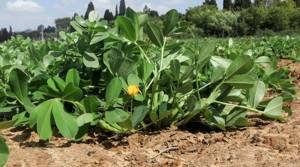
Basic care for peanuts consists of regular watering of the soil, loosening the soil, weeding and fertilizing. It is very important to protect newly emerging seedlings from weeds, therefore it is recommended to combine loosening the soil with weeding, and vice versa.
After the flowering phase is completed (this is 1.5-2 months after sowing the seeds), the ovaries will gradually descend to the soil and begin to germinate in the ground - this is where the formation and ripening of peanut fruits will occur. From the moment the ovaries bend down to the ground, the plant needs to be covered with damp soil, like potatoes.

Peanuts prefer to grow in moist, but not wet, soil. Therefore, it is better to water when the top layer of soil dries out. During the period of active flowering, the crop needs to be watered more often and more abundantly, about 1-2 times a week before noon. After flowering, the plant does not need watering so much as irrigation in the evenings every 1-2 days. If heavy rains begin when the fruits ripen, the peanuts should be covered with polyethylene.
Fertilize legumes twice a year:
- When the sprouts reach a height of 10 cm, the peanuts need to be fed with a solution of potassium salt (45 g), ammonium nitrate (20 g) and superphosphate (70 g) per 10 liters of water.
- At the very beginning of fruiting, you can also feed the plant, but this is not mandatory.
Note! It is very important to protect seedlings from attacks by birds, since they can completely destroy all peanut plantings.

It is necessary to closely monitor the condition of the plant, since peanuts are susceptible to gray mold, leaf spot, Fusarium wilt and powdery mildew. At the same time, the crop can be attacked by caterpillars, aphids and thrips; you can get rid of them if you sprinkle the beds with a mixture of tobacco dust and wood ash.
Important! To prevent the plant from being attacked by pests, weeds should be removed from the site in a timely manner, and the agricultural practices of the species and crop rotation should be observed.
Can I plant it in a pot at home?
It is also possible to grow peanuts at home. To do this, you need to provide suitable conditions for growing groundnuts, including:
- access to daylight;
- sufficient watering;
- timely application of fertilizing;
- optimal temperature.
To grow groundnuts, peanut seedlings should be watered generously using water at room temperature. Keep an eye out for pests such as spider mites. When pests appear, you need to promptly treat the plant with systemic fungicides in the dosage specified in the instructions. Before planting peanuts at home, it is important to ensure the right temperature. The plant is heat-loving and may die at a value below + 15.
To plant peanuts at home, you need to take spacious containers with fertile, loose soil. Then do the following:
- Moisten the substrate.
- Place the bent nut in the center and deepen it by 2 cm.
- Cover with film.
You need to watch how peanuts grow at home, ventilate the seedling, regularly removing the film. After the first two leaves appear, you can remove it completely. About a month and a half after planting, the peanuts bloom, and cultivation comes down to the successful rooting of the ovaries.
If the gynophores cannot sink into the ground, they will die, so you can help them and bend them a little.
To successfully grow as many peanuts as possible at home, you need to provide sufficient depth for the ovary to bury. Nuts ripen at a depth of 10 cm. Further actions:
- When the leaves of the plant turn yellow and wither, you can harvest: shake out the contents from the pot.
- Free from the earthen coma.
- Hang the bush in a warm and ventilated place.
After 10-12 days, you can separate the pods from the roots and send the nuts for storage. Knowing how to grow peanuts at home in a pot, you can get a harvest of nuts on your own windowsill without much hassle. Read here how you can fry them deliciously.
Harvesting and storing peanuts
When the outside temperature stays within 10°C, the peanuts will have to be removed. Lowering the temperature will affect the taste of the product - groundnuts will begin to taste bitter. Usually in early October, in dry weather, the bushes are dug up. The roots are cleared of soil, after which the plant is sent to dry in a dry, ventilated place.
The beans are collected from dried stems by hand. The harvest is re-dried - naturally or using an oven or dehydrator at 40°. The finished groundnuts are placed in boxes or canvas bags and stored in a cool, dry place.
Chufa harvest
The period for collecting chufa fruits begins after the stems turn yellow, that is, in September - October. Pre-water the bushes of the plant, preferably a day before. This way, when digging the nuts, they will not be torn away from the root ovaries. They dig them like regular potatoes, and the fruits are not dried in direct sunlight. Store in well-ventilated areas in paper bags. Keep away from insects.
This was my growing method, as explained above, I used old nuts, so I paid more attention than was required. Growing ground almonds can be much easier. If you are planting edible beetroot for the first time from a small number of tubers, then you can use a hoe to make shallow holes 7-9 cm deep and put nuts in them, lightly water them and sprinkle them with soil, similar to the principle of planting beets. Both between the holes and between the rows, the distance should be about 70 cm. For convenience, you can somehow mark the planting sites, since the stems of chufa are very similar to weeds and can be weeded by mistake.
Chufa is an unpretentious and extremely tasty nut with many beneficial properties. The chufa nut, which is quite inexpensive to grow, is very easy to grow in a garden or garden plot. Do not deny yourself this truly tasty and healthy delicacy.
PS Did you like the article? Then support us, click:
History of cultivation
Genetic studies conducted in 2021 revealed that modern cultivated peanuts are a hybrid of two wild species. It is the result of crossing pollen from the peanut duranensis, which is common in northern Argentina, and the ovules of the peanut ipaensis, which grows in the Brazilian jungle.
As a result of the development of agriculture in South America, cultivated peanuts began to be grown 7000 - 8000 years ago. American archaeologists discovered the remains of this nut, which turned out to be 7840 years old, in the valley of the city of Cajamarca in Peru in the upper part of the Zanya River. This place is considered the most ancient area for growing this crop.
Archaeologists have also found figurines and jewelry made of gold, silver and copper from the early Middle Ages (200 BC - 700 AD), which contain images of a peanut tree. In early modern times, the Incas used peanut oil as a main ingredient to protect the skin of the body.
The Spanish conquistadors learned about this product only in the 16th century during the conquest of the Aztecs, then the peanut fruits were brought to Europe. Only from the first half of the 20th century did they begin to cultivate it in other regions of the planet: Asia, Africa and Oceania.
Thus, ancient Indian tribes began cultivating groundnuts in the territory of modern Peru. In Africa, the culture spread with tremendous speed, and it is now a staple food for many African countries. For this reason, many authors mistakenly believe that this continent is the birthplace of peanuts.
The plant was first grown in South America, long before Columbus discovered the western continent. Even then, rich in protein and fat, the product was worth its weight in gold. Later, the Spanish conquerors brought it to Europe. High society at first did not know how to properly use the seeds, and even brewed them like coffee.
From Africa, along with slave traders who came here for live goods, the product went to North America. The nutritious and tasty seeds are appreciated here. Americans began to alternate the growing seasons of cotton with peanuts, thereby improving the composition of the soil and getting rid of the cotton weevil, a real scourge of cotton landowners.
In parallel with America, the “nut” reached India and China. Later it appeared in Tsarist Russia, in the areas of modern Southern Ukraine and the Caucasus.
Today, peanut oil is used in cooking and medicine. A nutritious emulsion is prepared from the seeds, which is used in cosmetology and the food industry. In the USA, the famous peanut butter is made from the product - it is spread on bread or used as an additive to hot food. Nutritious and protein-rich starch flour is also prepared from the seeds, which is valued no less than wheat or flaxseed.

Well, now you know whether peanuts are leguminous fruits and hopefully you will no longer confuse them with nuts. By the way, another significant difference between the two crops is their cost - nuts are 2-3 times more expensive.
Structure and development
The green stems of the bush are covered with leaves 3-7 centimeters long. Starting from the end of June, up to 200 self-pollinating flowers of white, yellow or red color bloom in 1.5 months.
This is what the flowers look like:
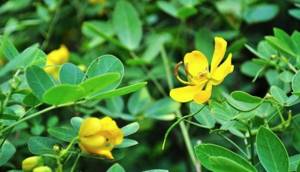
Each of them lives only one day. The ovary is formed by those located in the lower part of the bush. Some fruits are formed from cleistogamies - buds formed at the roots.
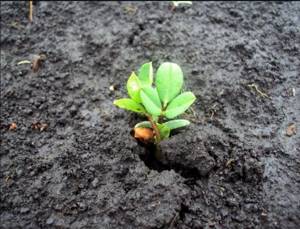
After pollination, the base of the receptacle (gynophore) lengthens and deepens into the bed along with the pod primordium. One bush produces up to 40 beans, each containing 1-7 grains in a thin brown or pink shell. After ripening, they are dug up.
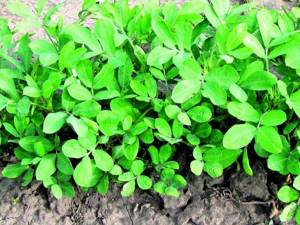
Sowing and watering
When the frosts stop appearing and the soil warms up enough, then you can start planting groundnuts. This happens in May.
It is also necessary to take into account that frosts may return on May 20-25, which will have a detrimental effect on peanuts.
Seeds should be planted when they are almost dry. Some gardeners recommend sowing whole beans. Everything that remains from the leaves should be thrown into the hole, since the remains will later act as fertilizer for the roots.
It is best to sow peanuts in squares, but it is also possible to sow them in rows. It is necessary to carefully review the seeds; for sowing they are selected in large sizes. If you plant small beans, they will not sprout.

Groundnuts love moisture, so you should be especially careful about watering. You need to water the plant once every six months. The procedure should be more frequent if the weather is hot.
This often happens in July and August. Water for irrigation should not be cold; it should be warmed up a little from the sun's rays.
Homeland of origin and distribution on the planet
- Peanuts originate from Peru. Judging by archaeological finds, it was highly valued even in the pre-Columbian era.
- The Spanish conquerors also appreciated the nutritional properties of the plant and brought peanuts to Europe. There it was used not only for food, but sometimes even instead of coffee.
- The legume then spread to Africa. The unpretentious plant helped residents avoid hunger, and in addition, it enriched the soil with nitrogen: thanks to it, the sandy soil became more fertile, and other crops could be cultivated on it.
- From Africa, peanuts came to India, the Philippines and Macau, then to China.
- Then peanuts came to North America, where they were cultivated on an industrial scale.
Reference: at the beginning of the 20th century, thanks to the black biologist George Washington Carver, there were already more than 300 products and goods based on peanuts: oil, drinks, cosmetics, soap, dyes, printing ink, yarn, medicine, insecticides, livestock feed, several types of plastics and even explosives.
Its ability to restore land after cotton was also successfully used, as a result of which peanuts became the main cash crop in the southern United States, displacing cotton from first place.


